10 Unexpected Things I Saw In An Amish Home (20 Photos)
This is a photo which we saw on a previous post. Notice anything unusual about this otherwise-standard Maytag wringer washer, common in Amish homes?
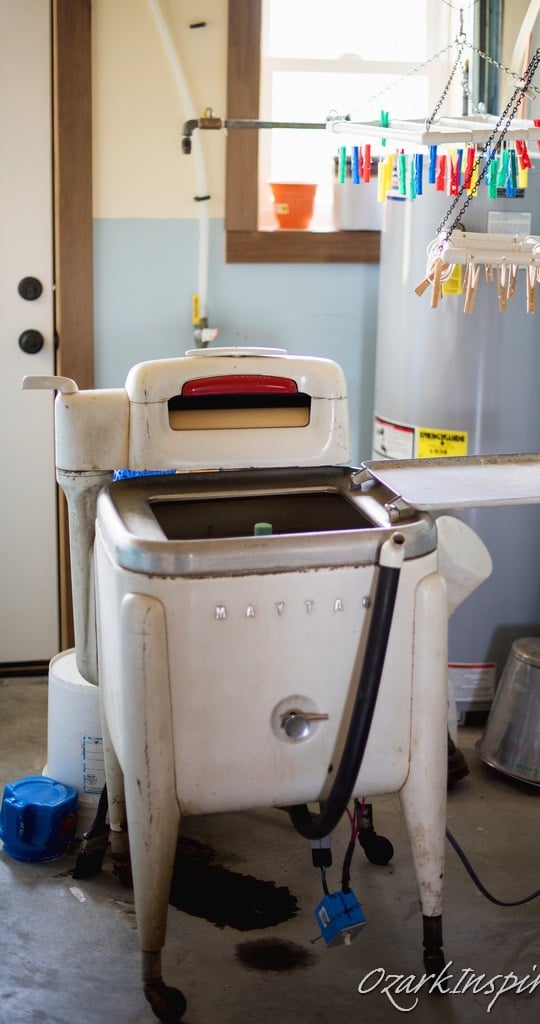
I wonder if anyone caught it when we shared it before. If you’re still scratching your head, Don Burke explains what’s going on here below.
Today Don gives us one last look at the home of Mary Graber of the Jamesport, Missouri Amish community.
As touched on before this is a pretty progressive settlement, technology-wise. In this post you’ll see some things Don found in Mary’s home on his most recent visit which surprised him. A lot of it revolves around the ways the Graber household gets power to run things like lighting, refrigeration, and more.
Pretty much all Amish use batteries to some degree (whether that’s as basic as 2 “D” batteries in a handheld flashlight or a calculator battery to battery-powered lamps in lieu of gas lighting), but this home has one of the most sophisticated battery power setups I have ever seen in an Amish home, which you’ll see further down the post.
The Amish here are not to be confused with the “electric” New Order Amish, a small group of at least ostensibly horse-and-buggy Amish who do permit public utility power in their homes.
The Amish at Jamesport are off the grid otherwise. The Graber household shows a family who has incorporated battery power system into their home in a way that is beyond what many if not most Amish today do.
In a recent post I shared about an opportunity I had to visit Mary Graber’s new home in Jamesport, MO.
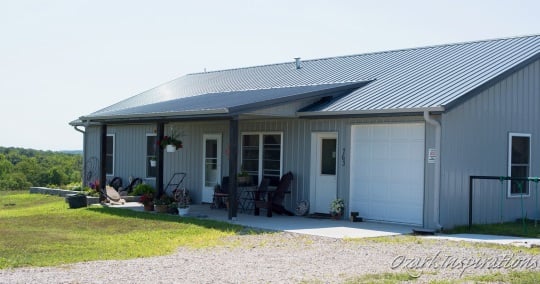
Mary is a personal friend, and she graciously allowed me to take pictures as she explained about the Amish Home Tour she gives of her home. Naturally a lot of the things her guests will see throughout the house are traditional Amish.
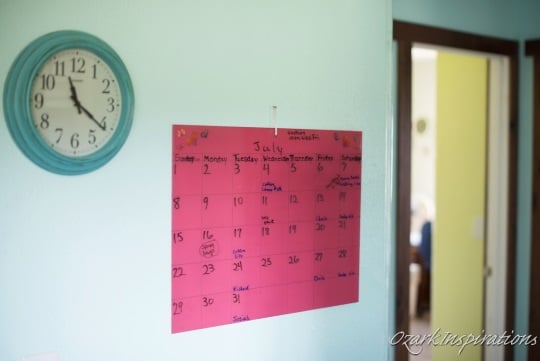
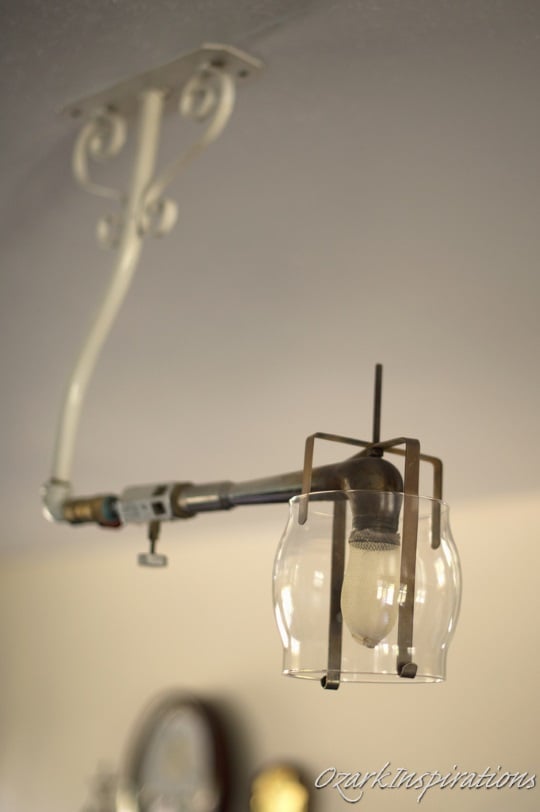
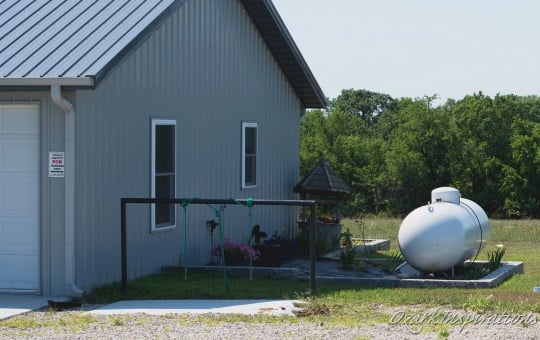
However, there were a few things that you might not expect.
1. I first got one of those what’s-not-quite-right-with-this-picture feeling when I saw these battery-powered lights. It’s not like I think Amish don’t use battery-powered flashlights. But these are more than momentary-use flashlights, but instead seem to be designed for longer, somewhat stationary use as a lamp. And the batteries are rechargeable! And where would an Amish family recharge a battery?


2. As we continue through the house I notice that there are other lighting options that are not exactly traditional Amish. Like most Amish homes, the Graber house sports propane/natural gas light fixtures in the various rooms. However, I was really surprised to see screw-in LED lightbulbs in regular light fixtures in some of the rooms and garage.

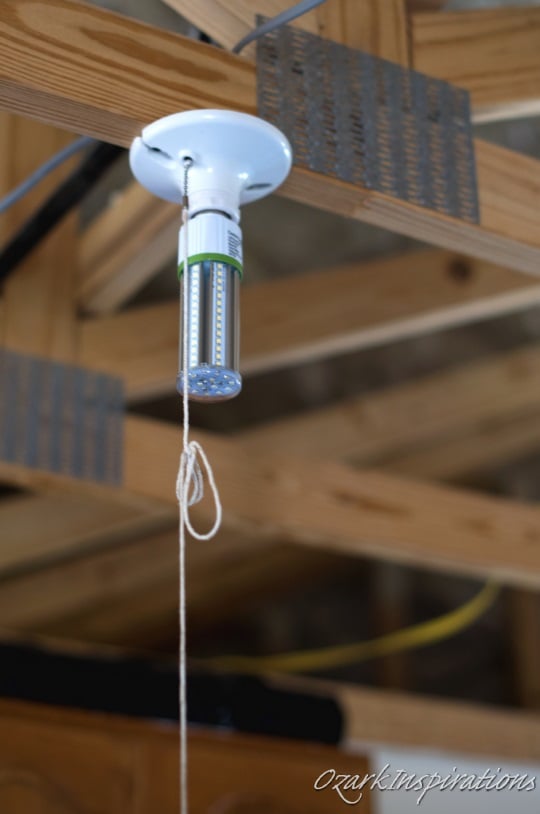
The LED lights do not give off heat like the propane lanterns do – which would be a very welcome difference on those hot summer nights.
3. And where there are electric light fixtures, we will naturally find electric wiring, too.

4. And along with unexpected house wiring comes the equally surprising breaker box.

5. Two of the biggest surprises of all were the very large electric chest freezer that runs off the house’s electric system….

6. …and the traditional wringer washing machine which is also run by electricity (instead of a gasoline motor).

Ultimately all of these are powered by a solar panel mounted on the roof.
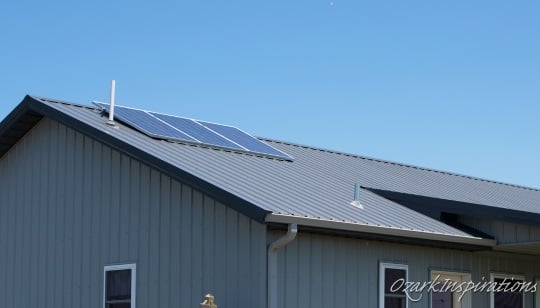
Jamesport is a more-progressive Amish community which allows use of solar-generated electricity. So to take the most advantage of this (and also to possibly help with the resale value of the home in the future), Mary’s new home was built with all the electrical wiring and much of the hardware in place that will allow it to be easily switched over to English use one day. But of course, being traditional Amish, the Graber home is not hooked up to the public electric powerlines.
7. Another thing that was a bit unusual was that throughout the house all the boxes where the English would normally have electric light switches or electrical outlets, these are covered over with solid plastic plates.


8. The electricity generated by the solar panels is directed into the house, and stored in a bank of batteries on the garage floor.

These batteries then supply energy to an inverter which converts the battery voltage into normal household current to power the few electric items in the house.
The system also has a charging station for additional automobile batteries. These batteries are used for the electrical needs (headlight and flashing lights) on the horse-drawn buggy. And they also serve a number of uses inside the house.

9. If you have a keen eye you may have noticed in the previous post on this new home that there was a small electric fan in the bedroom.
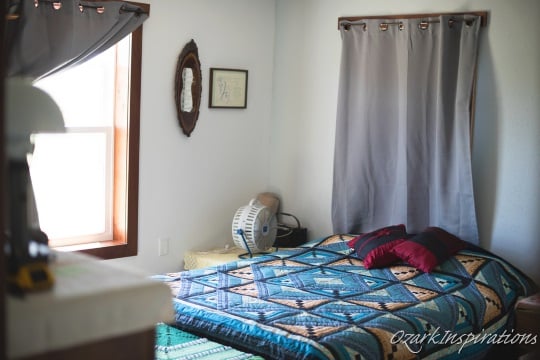
These draw too much electricity to be powered for long on a smaller rechargeable battery (like on the lamps, above), but operate much better when connected to the more-powerful larger battery.

10. Even larger and more modern equipment, like this modern sewer in Mary’s sewing room, are available to the Amish because of the additional power from the 12 volt car battery.

I always enjoy a visit with Mary Graber, and the chance to get to see her new home was a treat I won’t soon forget.
Thanks to Don for this interesting look at the Graber home. Catch more of Don’s photos on flickr.
Also, Don shares: The Amish Home Tours are by appointment only. If you are interested being a guest call Mary Graber at 660-684-6082. Leave a message and she will get back with you. Please call at least two or three days ahead to help insure that Mary is available and has a time slot open.


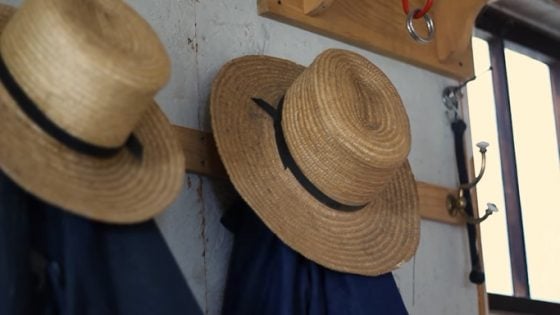
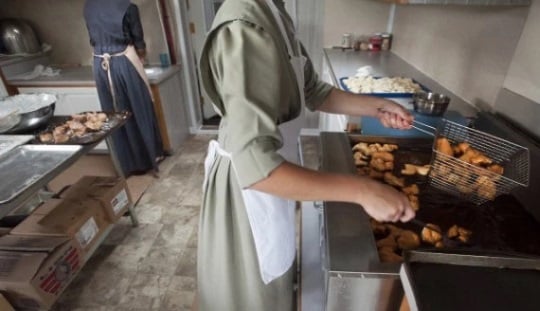
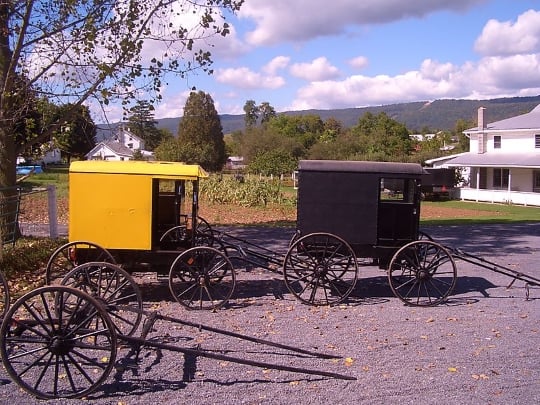

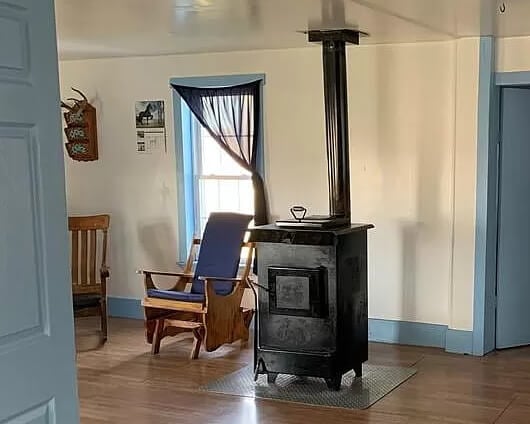
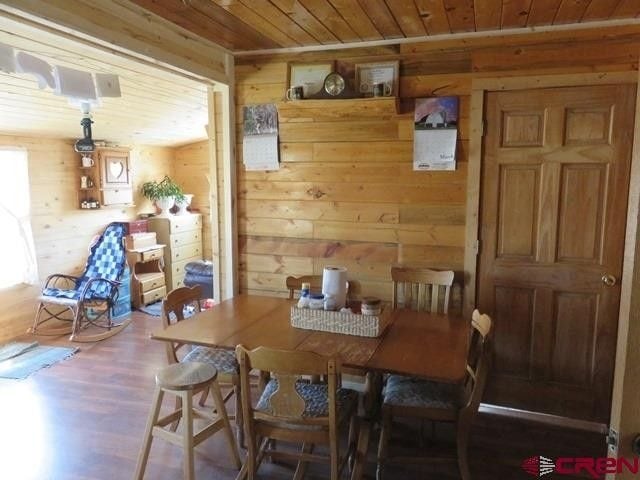

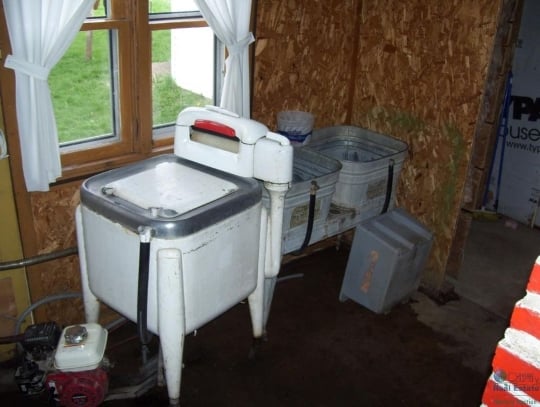

Wow. What an interesting read. It is amazing how the Amish are so different, but yet alike. We have been to Jamesport, MO. several times and didn’t know you could tour an Amish home there. But we have enjoyed going to the Amish bakery, grocery store & the county store when there. How does a person get to go on the tour when going there?
Juanita, there used to be a tour that was given by some of the local folks, and the name of their business was Step Back in Time (I think). Here is a link to a video that Ron Ledesma (one of the guides) did of the tour (https://youtu.be/GCf1dbappOo), but Ron has now moved away. I’m not sure if anyone operates that tour any more, but I would suggest that you contact Mary Graber (her home used to be a part of the larger tour); or contact her daughter, Marie Graber at Arbor House Country Inn (she has a Facebook page for the Inn). I’m sure that one of them could answer your question. And if no one is giving tours, I know that Marie could provide an area map and point out places for you to see.
On that topic I’ll just add the link here to the post Don and Marie put together on Jamesport and her Inn, if it’s of interest: https://amishamerica.com/marie-graber-on-jamesport-amish-tourism-and-more/
Unexpected things I saw in an Amish home
Thank you for the website and info on the tours.
No longer Amish
Marie Graber at Arbor House Country Inn was raised Amish, but has now become Mennonite.
Also common in Lancaster, Pa
I stayed in an Amish home many times a year for years. The solar panels, car batteries, all of that are becoming very common in homes there. The solar panels also power the car batteries for the buggies. The home I was in, of course, used gas refrigerator & stove. But rather than a wringer washer there was a typical standard electric washing machine & gas dryer. The bishop allowed electric to go to the house for the water pump (as well as the house up the road) because they were English owned first & he wasn’t going to make them convert it. Most outlets & light switches had plates. But not all! If we wanted to we could plug things in and turn lights on. But we strictly used LED lanterns. I had no problem adjusting to the differences during the last 5 years. Inconvenient, especially w no ac in the summer. But some of Lancaster’s Old Order is quite relaxed while still keeping w many of the ways. Just clever & accepted ways around it.
Interesting comment Amy. I have seen the standard electric washer run via a generator in Lancaster before, but had not seen the type of setup with the Maytag as in this post. As for the electric in the previously-English-owned home, is it possible that they had a period of time before needing to convert it? This is what I’ve run into before, for instance the family is expected to remove the electric but is given some time to do it on account of the cost involved.
https://amishamerica.com/amish-electric-washers/
modern conveniences
Thanks for sharing this Don. It amazes me the creativity of the Amish. This family has learned how to enjoy a few modern conveniences while still staying off the grid. Kudos to them.
Construction materials
To be honest, I was more surprised by the spray foam insulation beneath the roof and pre-fab roof trusses.
Patrick, you might find it even more surprising, then, to know that the Amish there in Jamesport have a business that makes trusses. I don’t know for sure that these came from there, but I’d say there is a good chance they did.
Mary’s son is / has been a carpenter, and he seems to stay current on a lot of the stuff that is available. And naturally he’s going to put the best he can into his mom’s home.
Thanks.
Thanks everyone for the compliments. And Erik it’s always a pleasure to be a part of Amish America again.
I am confused
as to why the Amish use solar panels, inverters, batteries, etc presumably bought from the English instead of using electricity. I respect the Amish for their beliefs and lifestyle. They buy supplies, food, medical care, etc from the English so why not buy electricity? I’m not being critical but just fail to see the difference. BTW I am really enjoying learning more about these good people.
Gerald, you raise a very good question (IMO). The answer I’ve heard is that being “on the grid” would mean to be “unequally yoked together” with unbelievers, which the Bible says is wrong. How that is unequally yoked and being hooked up to the same natural gas utilities (which some Amish are known to do), that is an incongruency that I’ve yet to hear a believable answer for.
But on the practical side, being off the grid does prevent (or seriously limit) access to a host of potentially worldly and certainly time-wasting possibilities, and distancing from that kind of thing is very consistent to the Amish perspective.
Thanks, Don, for sharing the pictures. Very interesting. Always enjoy your posts. And, thanks, Erik, for letting him do so.
I am so glad that you enjoyed them – sharing with others doubles the fun.
Thanks Don
I thought of the wasted time angle and I understand how tempting it would be to computers, games etc to homes on the grid. Thanks for the answer. I too enjoyed the photos and descriptions.
Solar panels
Interesting. I highly doubt all the power used in this house comes from that rather small solar panel pictured. Probably a generator helps charge it. Years ago I visited an Amish water garden. I asked how they run it. She said by the the solar panel. I did the math and I would be willing to bet the farm that small solar panel didn’t supply all the electricity to run a one horse power water pump 24/7.
Daniel, I’m not sure what you mean by “all the power” as there is little in the house that is run by electricity. But I can say that I went through the whole house — inside and outside — and didn’t see a generator. And I’m pretty sure that the tone of the conversation was that the solar panel was the sole electric power source in the house.
The chest freezer will very likely take more juice than the small solar panels on the roof.
Need help
Hello:
My name is Jason Crawford. I live in Harrison County Missouri. I’m wanting to know how I would be able to become a full time driver for the Amish and even Mennonite communities? I’m very interested in doing this. I’m available for local and out of state trips as well. I just have not been able to find out how to or who to talk to about providing this service. I know there are people who do drive the Amish where I live. I’ve not been able to speak with any of those drivers though. If you have any information on this for me or could possibly place me in contact with someone that would be great. I can be reached by way of phone at 920-342-6522. Thank you.
Jason
Need help
Hello:
My name is Jason Crawford. I live in Harrison County Missouri. I’m wanting to know how I would be able to become a full time driver for the Amish and even Mennonite communities? I’m very interested in doing this. I’m available for local and out of state trips as well. I just have not been able to find out how to or who to talk to about providing this service. I know there are people who do drive the Amish where I live. I’ve not been able to speak with any of those drivers though. If you have any information on this for me or could possibly place me in contact with someone that would be great. I can be reached by way of phone at 920-342-6522. Thank you.
Battery operated items
I was wondering if rechargeable batteries are less costly to run any home. If electricity goes up would this be an option for lower income families?